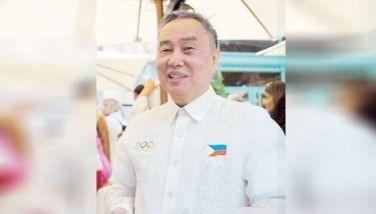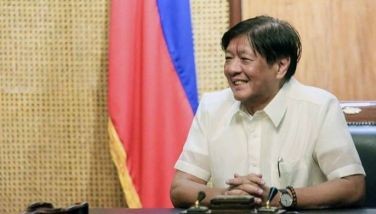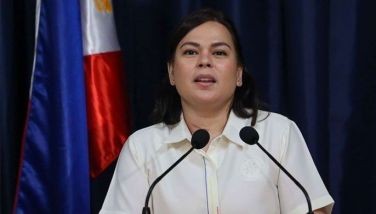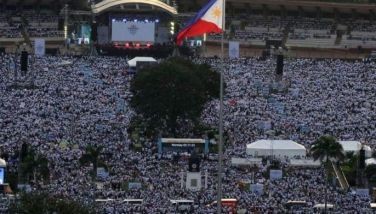Life and survival under martial law

At this time of the year since 2011, I have written in this space a piece about martial law and the Marcos dictatorship. Mostly I have ruminated on the wrong decisions by the Cory Aquino government that have, since then, allowed the pernicious imprint of martial law – military and police abuses, extrajudicial killings, enforced disappearances and other human rights violations – to leave its mark on every post-dictatorship administration for the last 30 years.
Today I would like to share a more upbeat account of my experiences, such as when I related (on Sept. 20, 2014) how, after nine years of military detention, I managed to escape in May 1985.
As a journalist-political activist since the early 1960s, I have developed this philosophical attitude: to steadfastly uphold the principles I have embraced (to serve the people), give my utmost under all circumstances, and be prepared for the worst. Thus, when Marcos suspended the writ of habeas corpus after the Plaza Miranda bombing on August 21, 1971, I resigned as sub-business editor of the Manila Times and assumed a semi-underground mode of living, together with my comrade-wife, Bobbie Malay. Our two children were born in the underground.
Assuming another identity and altering my physical appearance, I managed to travel freely from place to place via public transportation. From time to time, I would visit businessmen friends who gave generous financial support and lent me their motor vehicles. For two years I drove about in an “owner-type” jeep sans a driver’s license, but never had a problem with checkpoints and the military-police manning them. Except once, when a friendly patrol car stopped us to say that my vehicle’s license plate had become detached…phew!
For some time, we shifted from one safehouse to another along the MacArthur highway in Central Luzon. Walking in the rice fields behind the house, watching the sunrise or sunset with my little family, was a pleasurable respite from the cares and worries of living under a repressive regime.
There was one place where it was my task to fetch water several times a day from a hand-operated pump on the edge of the highway, as vehicles whizzed by on the road.
When I was captured upon arrival in a house in Olongapo City in January 1976, I immediately knew that a very bad ordeal was going to begin. I prepared my mind accordingly.
True enough, one of my captors, then Lt. Amado Espino, confronted me with eyes bristling with rage. Pointing to bullet-wound scars on his neck, he barked: “See what your comrades did, they almost killed me!” Calmly I riposted: “But why did you stand in the line of fire?” He fumed. Later on, after he and his colleagues failed to extract a single word, or even a moan from me in a nightlong torture session, Espino brought me to a sugarcane field, cocked his Armalite rifle and said: “So you won’t talk. We’ll leave you here dead.” Again calmly I replied: “You can’t shoot me dead. You need to present me to Marcos, your master.” He knew I was right. Espino backed off, cursing.
Before the torture session, my captors presented me, with my blindfold removed, to their senior officer, who had ordered me placed in a dark mosquito-infested cell. I had asked the guard for the officer’s name and he guilelessly gave it: Major Benjamin Libarnes. So when the group got exhausted in torturing me without getting any information, Libarnes said, “OK, boys, he’s doing yoga and we’re all tired. Pahinga na muna.” That’s when I spoke: “OK, Major Libarnes, you can rest now.” Aghast, he cried out, “How did you know my name?” I knew then I had gotten him unsettled.
The third military officer who figured prominently in torturing me was then Lt. Rodolfo Aguinaldo. Taking his turn after that first unsuccessful session, he removed my blindfold and bellowed: “Look into my eyes. I’ll give you hell!” I did just that, staring steadily at him as he pummelled me with his fists and kicked me on the chest (the sole of his combat boot left a mark that stayed for days). Getting no reaction of fear or pain from me, ”Agi” stomped on the floor, pulled his long hair and repeatedly cursed at me. He realized he had failed and left in a huff.
(At a recent media forum on martial law, journalist Raissa Espinosa-Robles, author of a well-documented book, “Martial Law, Never Again!”, disclosed that a ranking AFP officer, who claimed to have witnessed my interrogation but not the torture, had told her: “Satur was tough.” He acknowledged that torturing me was a futile exercise.)
Yes, it’s possible to take the moral and political high ground in such circumstances. After nine months of solitary confinement, I was transferred to the big detention center at Camp Bagong Diwa in Bicutan, Taguig. Along with the other detainees there who had survived brutal treatment with their spirit similarly unbroken, we decided to organize ourselves and demand that we be allowed to manage our day-to-day life in prison. We succeeded. Through secret balloting we elected our leaders, and I got the unanimous vote to be the spokesperson and head of the executive committee.
For almost nine years until my escape in 1985, I remained head of the Samahan ng mga Bilanggong Pulitikal sa Bicutan, which ran a democratic system of self-governance within a military prison. We augmented the meagre food budget (P4 a day) by producing handicrafts, the income from which also partially funded the basic needs of poor families among us. Our products carried the message: “Free all political detainees!” That message was sent across the country and beyond, helping build up the movement, nationally and internationally, against the Marcos dictatorship.
Our morale remained high, through five hunger strikes that led to the release of hundreds of political detainees. We transformed prison into a school – for literacy and for broadening, deepening social consciousness and the political commitment to fight for freedom and oust the Marcos dictatorship.
Our efforts paid off well.
* * *
Email: [email protected]
- Latest
- Trending




























